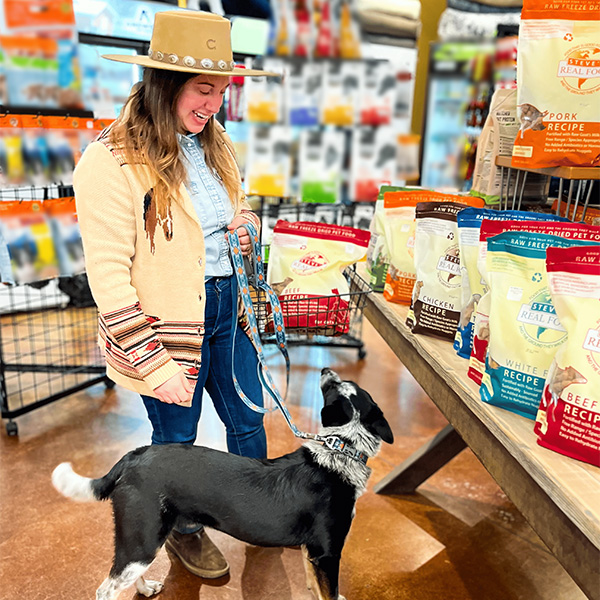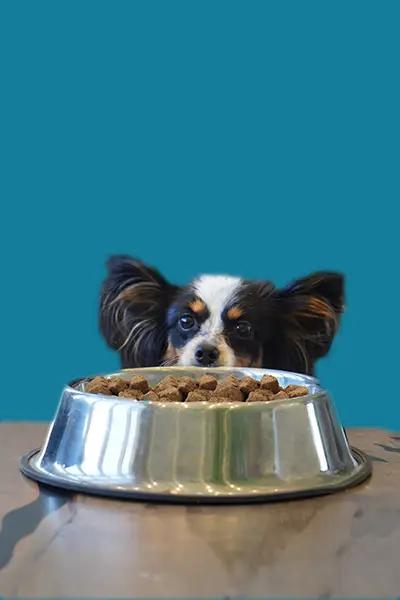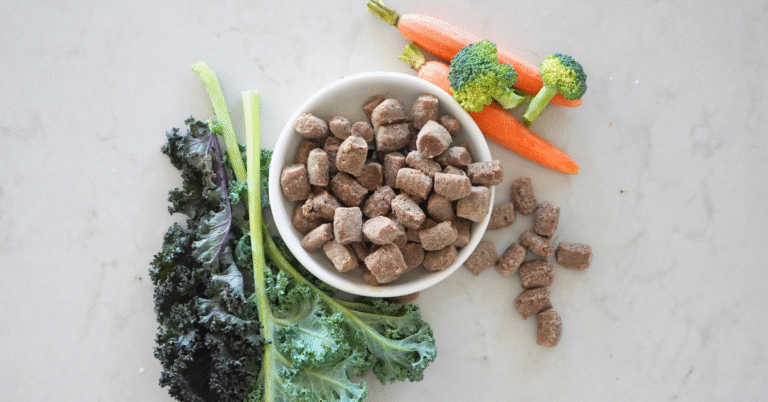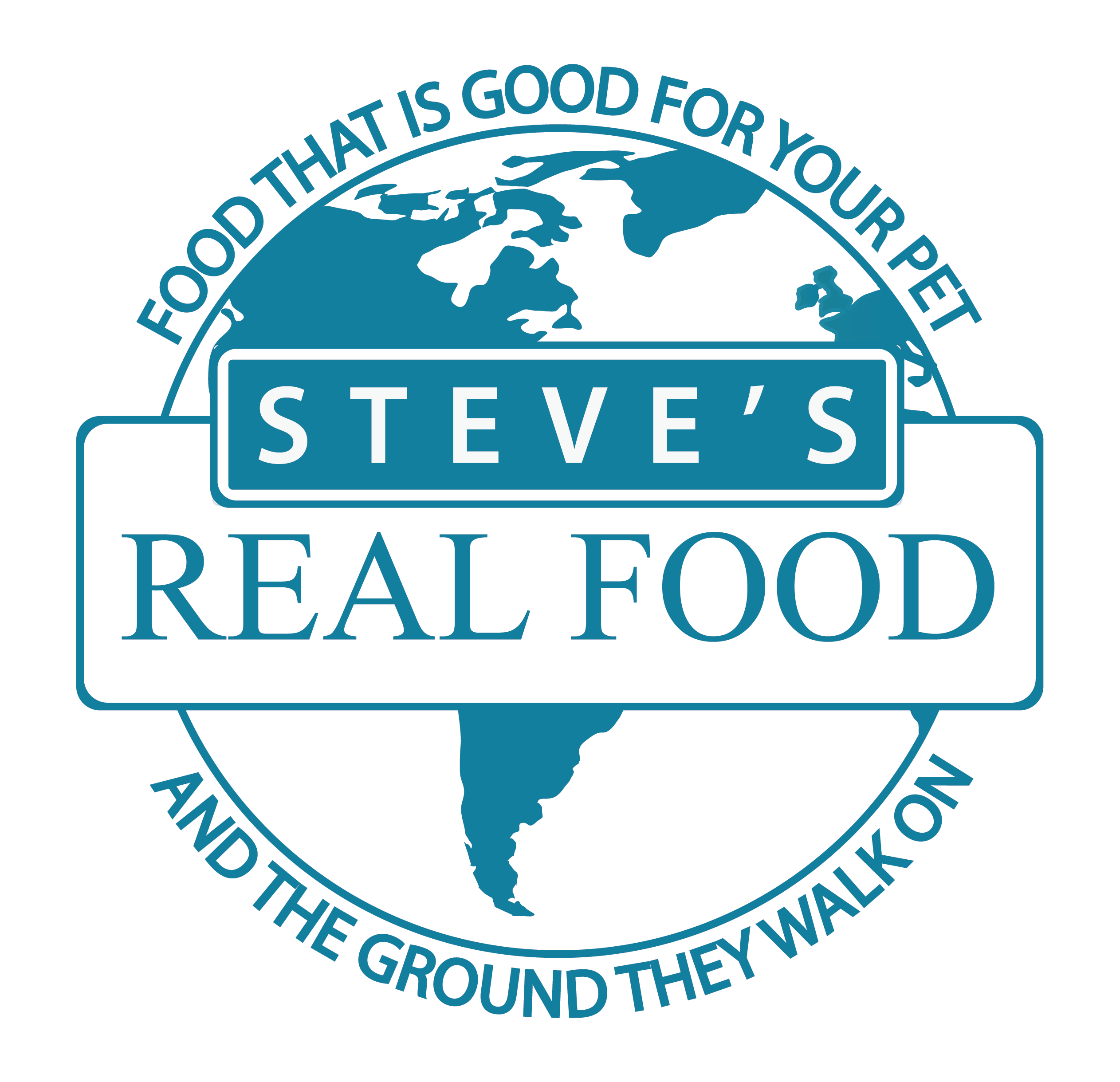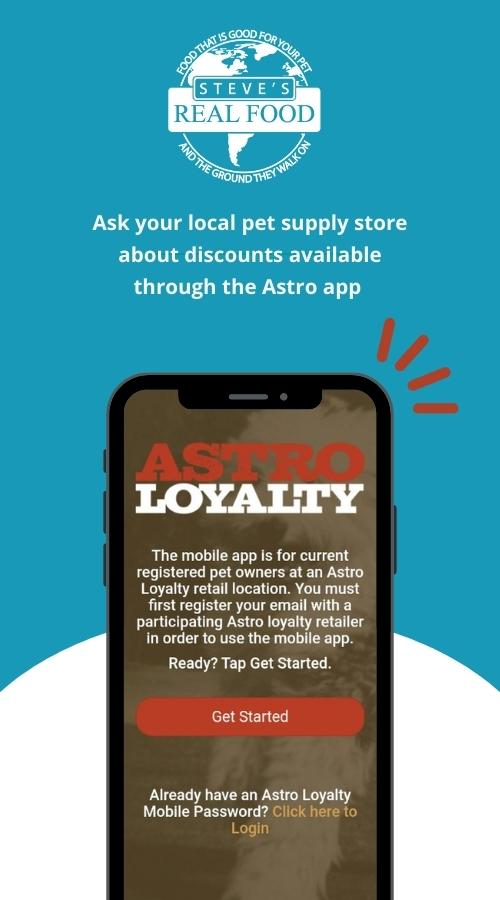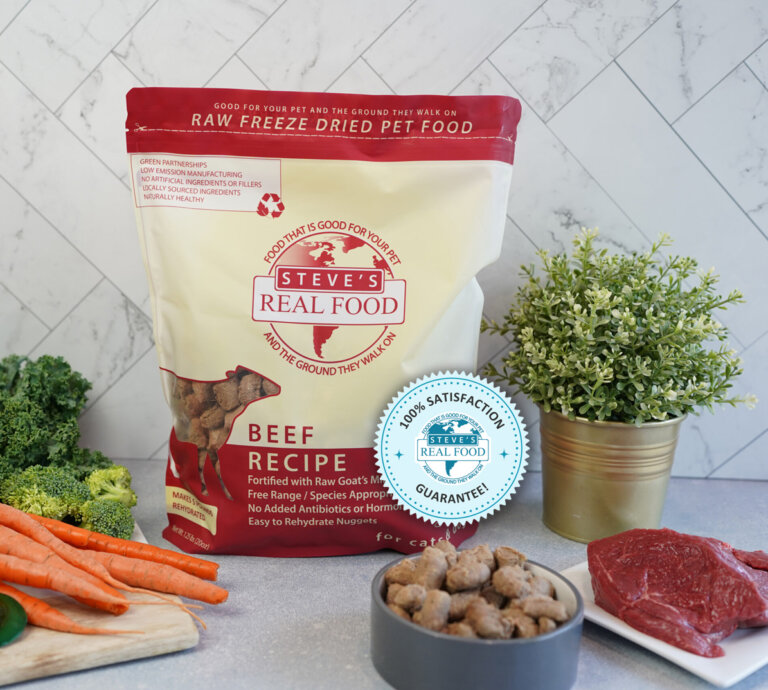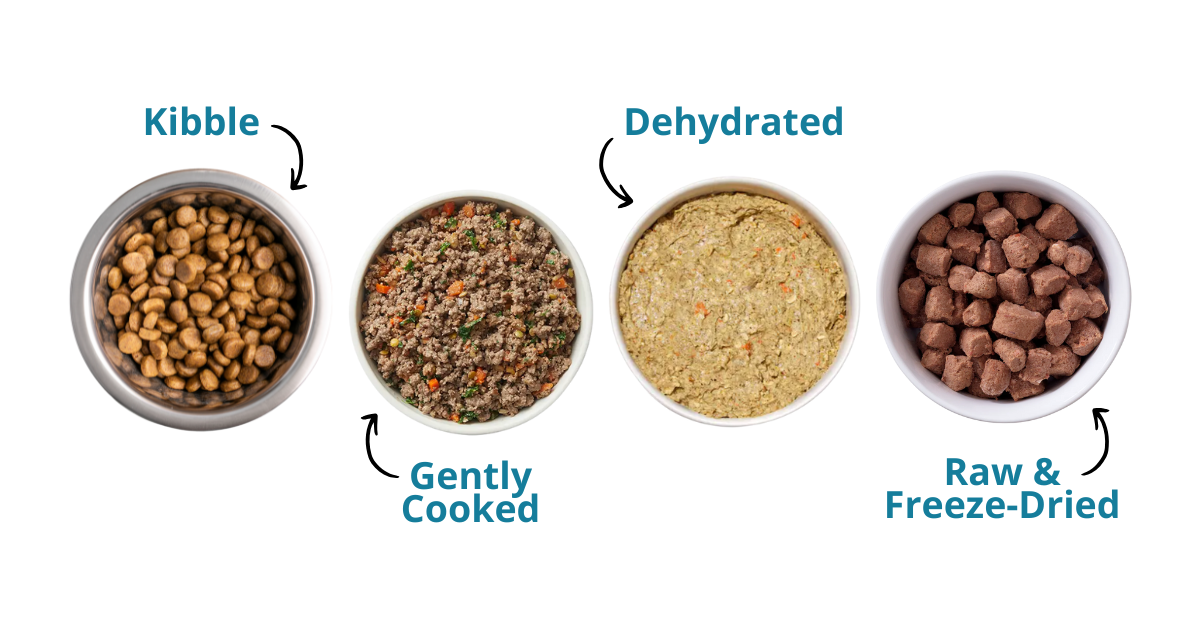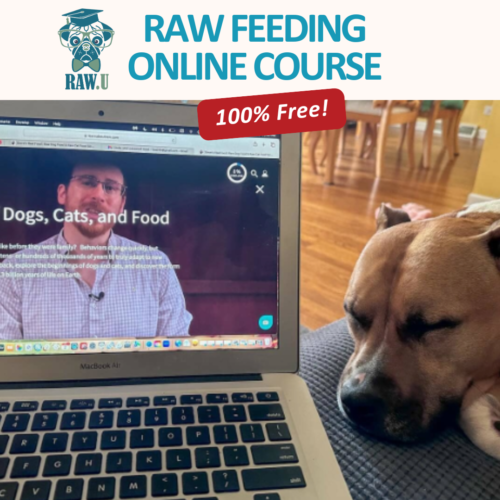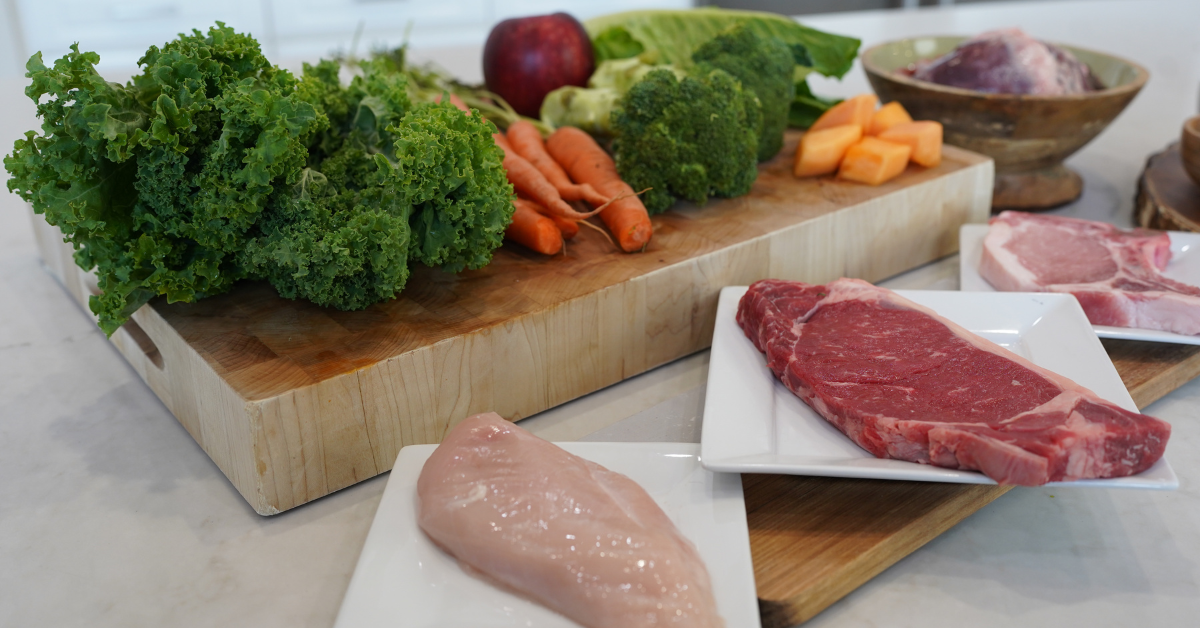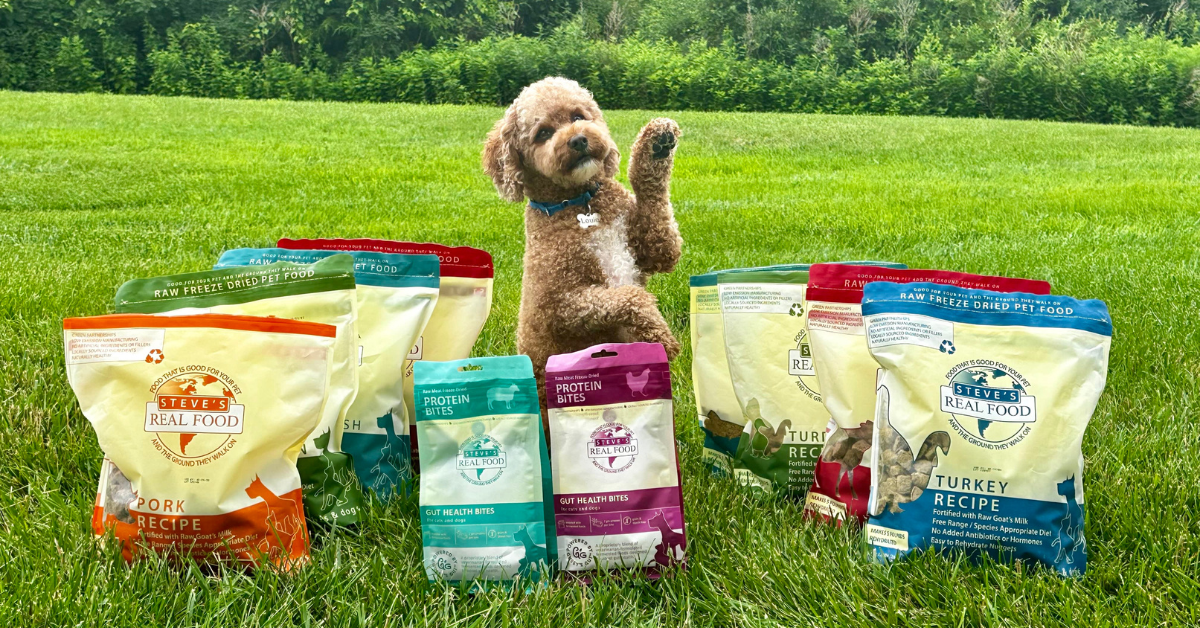Choosing the right food for your dog or cat can feel overwhelming. With so many options on the market — from kibble to raw diets — it’s not always easy to know which one is best for your pet’s needs, lifestyle, and your own routine. To help you make sense of it all, we’ve broken down the main types of pet food, how they’re made, and what makes each unique.
1. Kibble (Dry Food)
Kibble is the most common type of pet food. It’s made by combining ingredients, cooking them at high heat, and shaping them into crunchy pieces.
- Pros: Affordable, easy to store, convenient to feed.
- Cons: The high-heat processing can destroy some nutrients, and many kibble formulas rely heavily on carbohydrates.
Kibble can work well for busy households, but it may not provide the same level of fresh nutrition as less-processed options.
2. Canned Food (Wet Food)
Canned food contains more water and often more animal protein than kibble. Many pets love its taste and texture.
- Pros: High in moisture (great for hydration), tasty for picky eaters, available in a variety of textures.
- Cons: Pricier per meal, can be messy, and needs refrigeration after opening.
Wet food can be especially helpful for enticing picky eaters or for supporting hydration in cats or senior pets, who often don’t drink enough water on their own.
3. Raw Food
Raw diets typically include fresh, uncooked meat, organs, bones, and sometimes vegetables or fruits. These come frozen or freeze-dried.
- Pros: Minimally processed, highly digestible, and closely mimics what pets’ ancestors ate.
- Cons: Requires freezer space, careful handling, and prep (thawing) before feeding.
Mimics a pet’s ancestral diet. Minimally processed, nutrient-dense, and highly digestible for a range of health benefits.
4. Freeze-Dried Food
Freeze-drying preserves raw ingredients by removing water under cold, vacuum conditions. This keeps nutrients and flavors intact.
- Pros: Lightweight, shelf-stable, and offers raw nutrition without freezer storage.
- Cons: More expensive, some meal prep required as you must rehydrate the product with water for digestion and hydration.
This is a great option for pet parents who want the benefits of raw feeding with less mess and easier storage. A lightweight option for travel and on-the-go.
5. Dehydrated Food
Dehydrated food is gently dried at low temperatures to remove water, preserving more nutrition than kibble while being easier to store than raw.
- Pros: Nutrient-rich, shelf-stable, and lightweight.
- Cons: Needs rehydration before serving and may take a little extra prep time.
Think of this as a middle ground between kibble and raw — convenient but still nutritionally strong.
6. Gently Cooked Food
Gently cooked food is lightly heated at low temperatures to kill harmful bacteria. They’re usually sold frozen or refrigerated.
- Pros: Easy to feed, palatable.
- Cons: Requires fridge or freezer space, a high-quality, gently cooked food is usually the most expensive choice on this list.
This option is ideal for pet parents who want fresh, balanced meals with the convenience of ready-to-serve food.
So, what’s the best dog food or cat food?
Every type of food has its strengths, and the “best” option depends on your pet’s age, health, preferences, and your lifestyle. Don’t feel locked into just one specific type of food, either – Variety is the spice of life! You can mix and match different foods and add raw toppers to kibble or rotate between canned and gently cooked meals.
The most important thing? Choose a high-quality diet made with wholesome ingredients and formulated to meet your pet’s nutritional needs. Find a store near you using our Store Locator or buy online at RawPetFood.com, the official online store of Steve’s Real Food!
 Beef
Beef Chicken
Chicken Whitefish
Whitefish Pork
Pork Lamb
Lamb Turkey
Turkey Turducken
Turducken All Protein
All Protein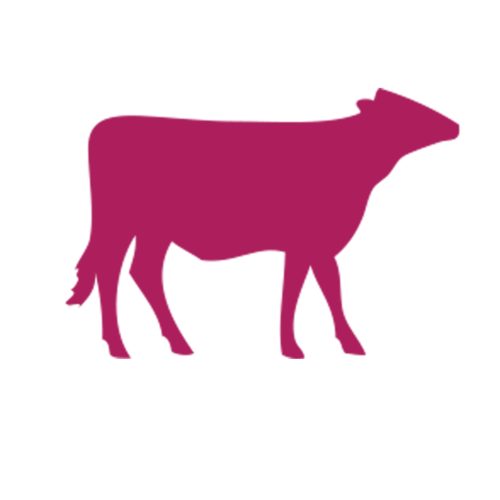 Beef
Beef Chicken
Chicken White Fish
White Fish Pork
Pork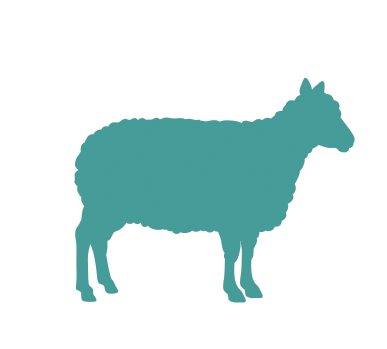 Lamb
Lamb Turkey
Turkey Duck
Duck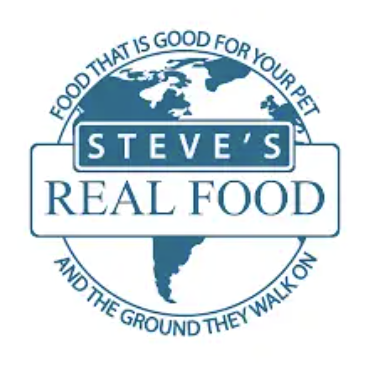 All Products
All Products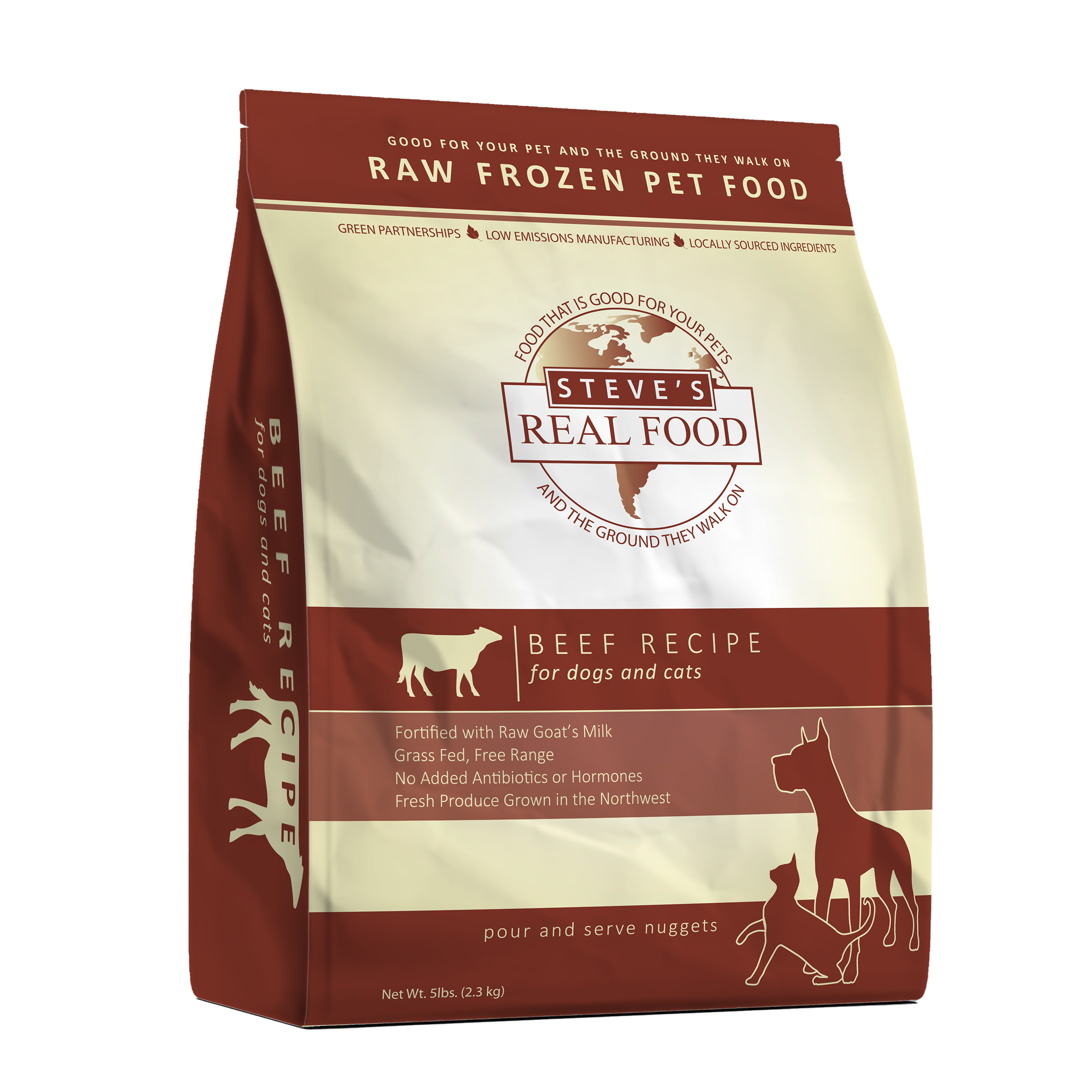 Frozen Raw Pet Food
Frozen Raw Pet Food
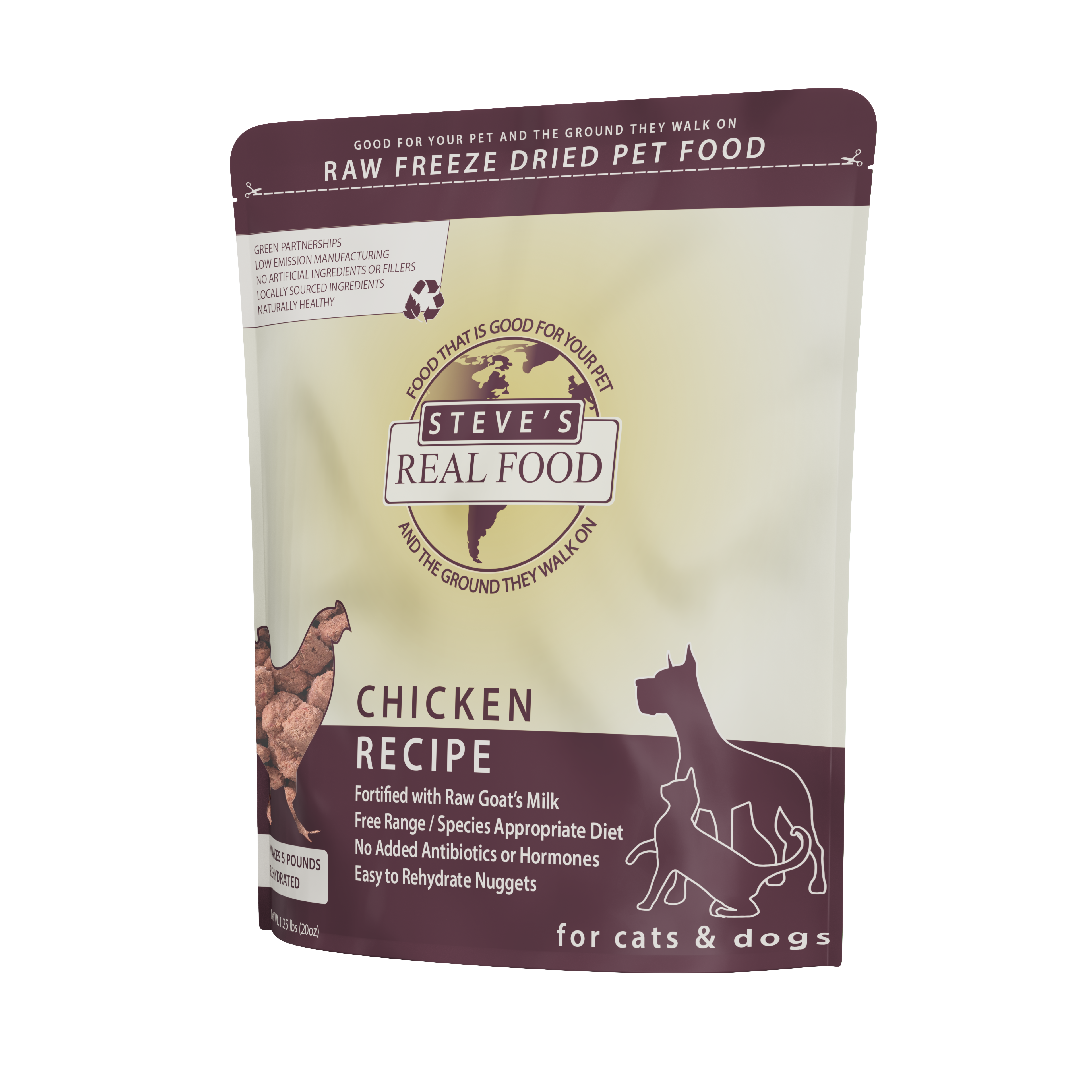 Freeze Dried Raw Pet Food
Freeze Dried Raw Pet Food
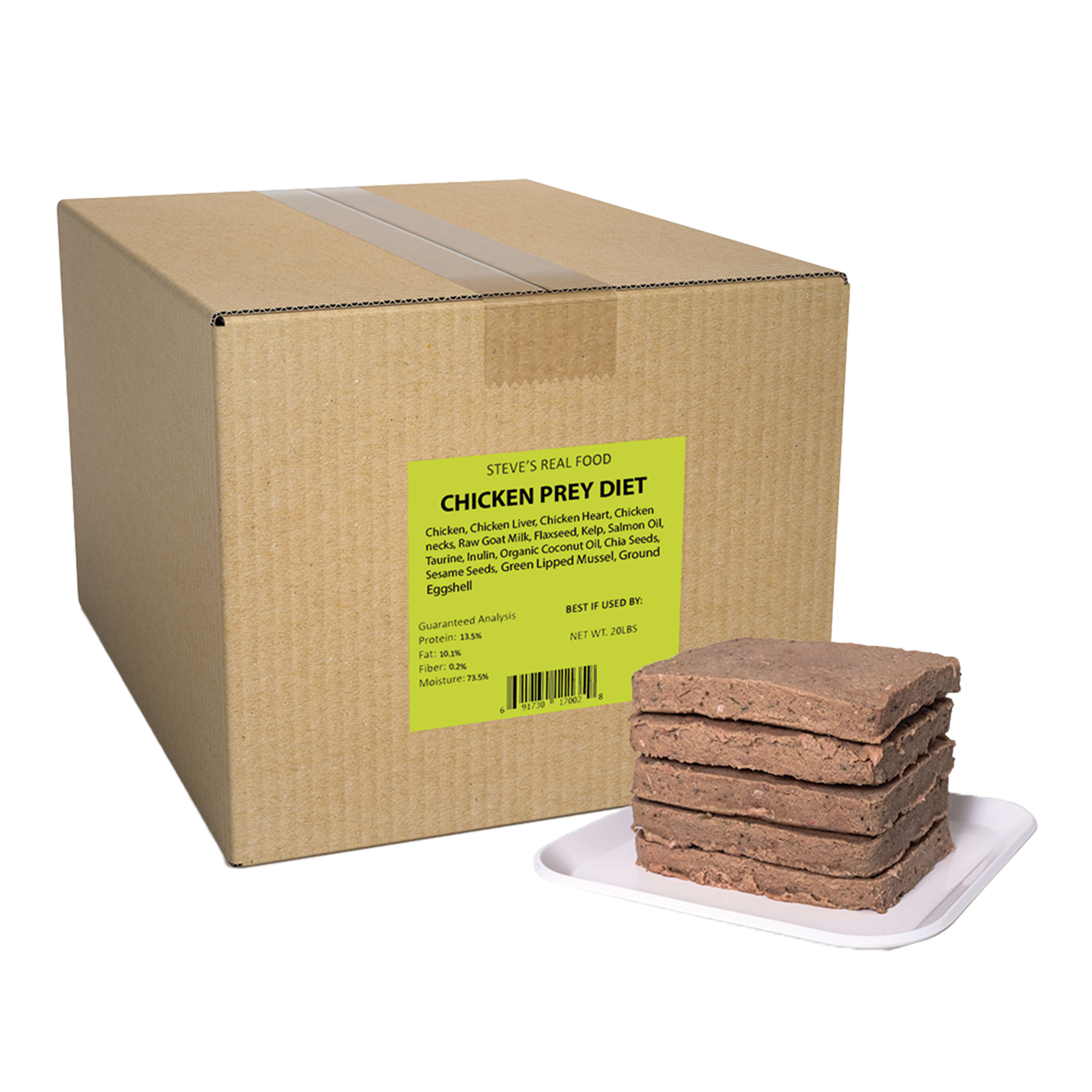 Frozen Prey Diet
Frozen Prey Diet
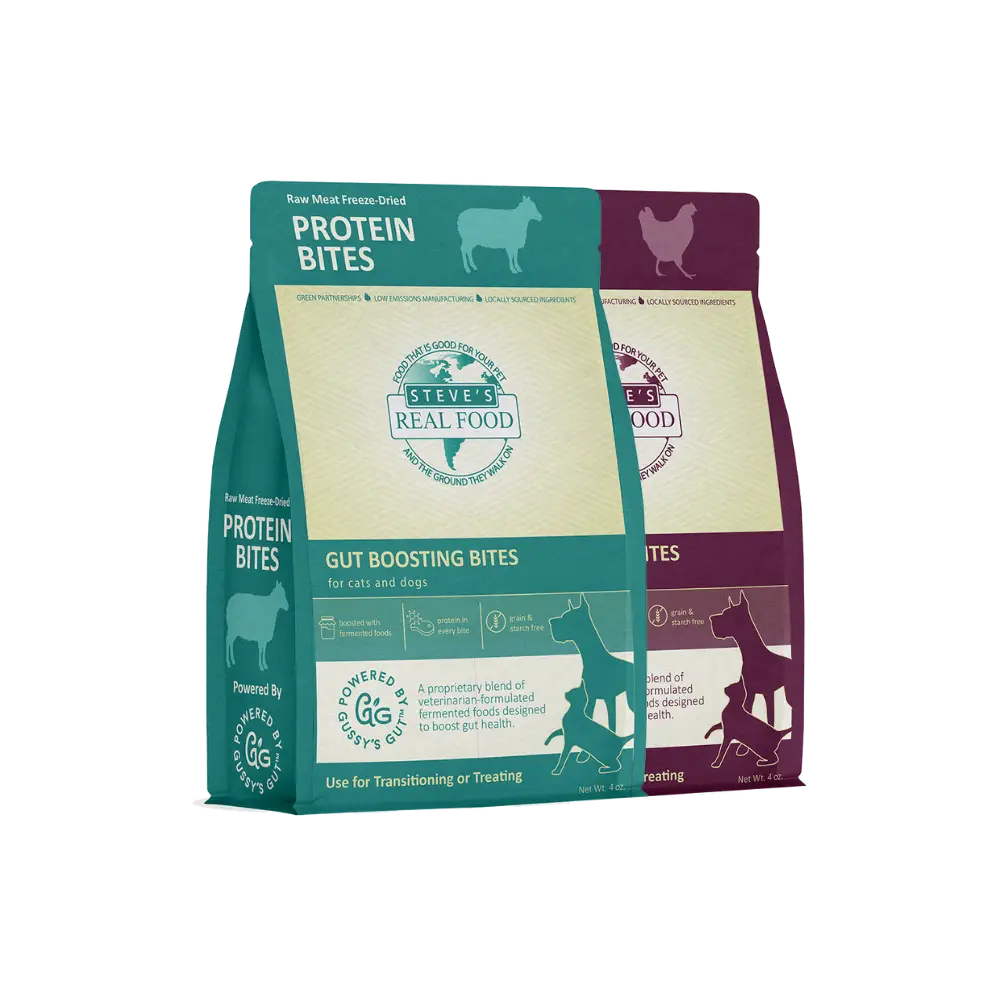 Freeze Dried Protein Bites
Freeze Dried Protein Bites
 Frozen Quest
Frozen Quest
 Freeze Dried Quest
Freeze Dried Quest
 Eggs over Easy
Eggs over Easy
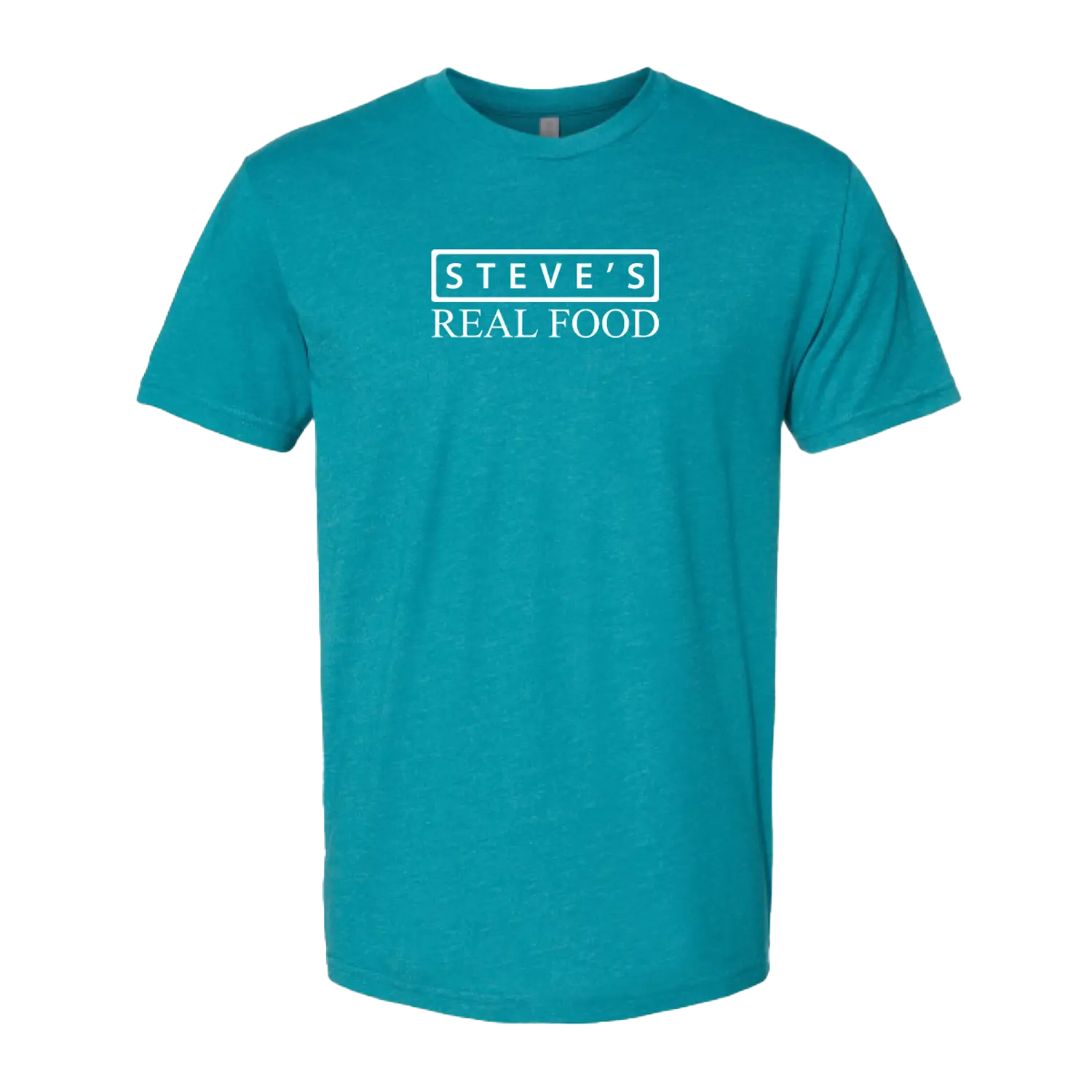 Steve's Merch
Steve's Merch 